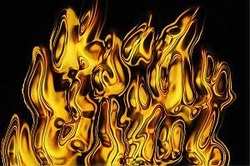 A back spasm can occur when the muscles supporting the spinal column, particularly those in the lower back, become overworked. If the muscles suddenly contract near the nerve roots around the spinal cord, this condition can be extremely painful. Muscles that are overstretched or worked more than usual can become tender and inflamed. The pain may first become noticeable when you are twisting your back, or are pushing or pulling something, particularly if you are moving something heavy. Sudden movements in particular are likely to trigger back spasms. Playing golf, for example, in which the back twists quickly as the golfer swings, can cause the back to spasm. Weightlifting, baseball and football are other sports that carry a higher risk of back spasm. Even something as seemingly safe as gardening can cause back spasms, since it usually involves bending and turning. If the activity is not stopped immediately, the spasms are likely to get worse. Among other things that can increase your risk of suffering a back spasm are:
· Weak stomach muscles · Tight hamstrings · A tipped pelvis · Lordosis (an exceptional curvature of the lumbar spine) · A back condition such as spondylolysis, arthritis or spinal stenosis Typical back spasm treatments usually involve resting the back first, then—as it heals—strengthening the muscles that support the spine. Bed rest is not usually recommended for the long term, as it can actually hinder the healing of the back. You should try to keep active, but be sure not to put any strain on the back muscles. While resting, experts recommend that you lie on your back on the floor with a pillow under your knees, or with your knees bent and your legs resting on a chair. Acetaminophen or anti-inflammatory pain relievers such as ibuprofen are often recommended in the first days, though they should not be taken on an extended basis due to the damage they can do to your stomach and liver. You can also apply heat for 20 to 30 minutes at a time to help soothe sore back muscles. When your back has sufficiently healed, you can slowly begin to introduce more movement. A visit to your chiropractor is always a good idea, as he or she can remove any spinal subluxations that may be causing muscle imbalances and can suggest exercises you can do to strengthen the core muscles in the trunk (not only the back, but the abdomen as well) that are so vital in supporting the spinal column as it moves in different directions. Stretching the hamstrings and psoas muscles can also help by reducing the tightness that often develops from spending long hours in a sitting position, and that often contribute to the likelihood of muscle spasms.
0 Comments
Leave a Reply. |
AuthorPosted by Dr. Babak Missaghi Archives
August 2017
Categories
All
|

 RSS Feed
RSS Feed
